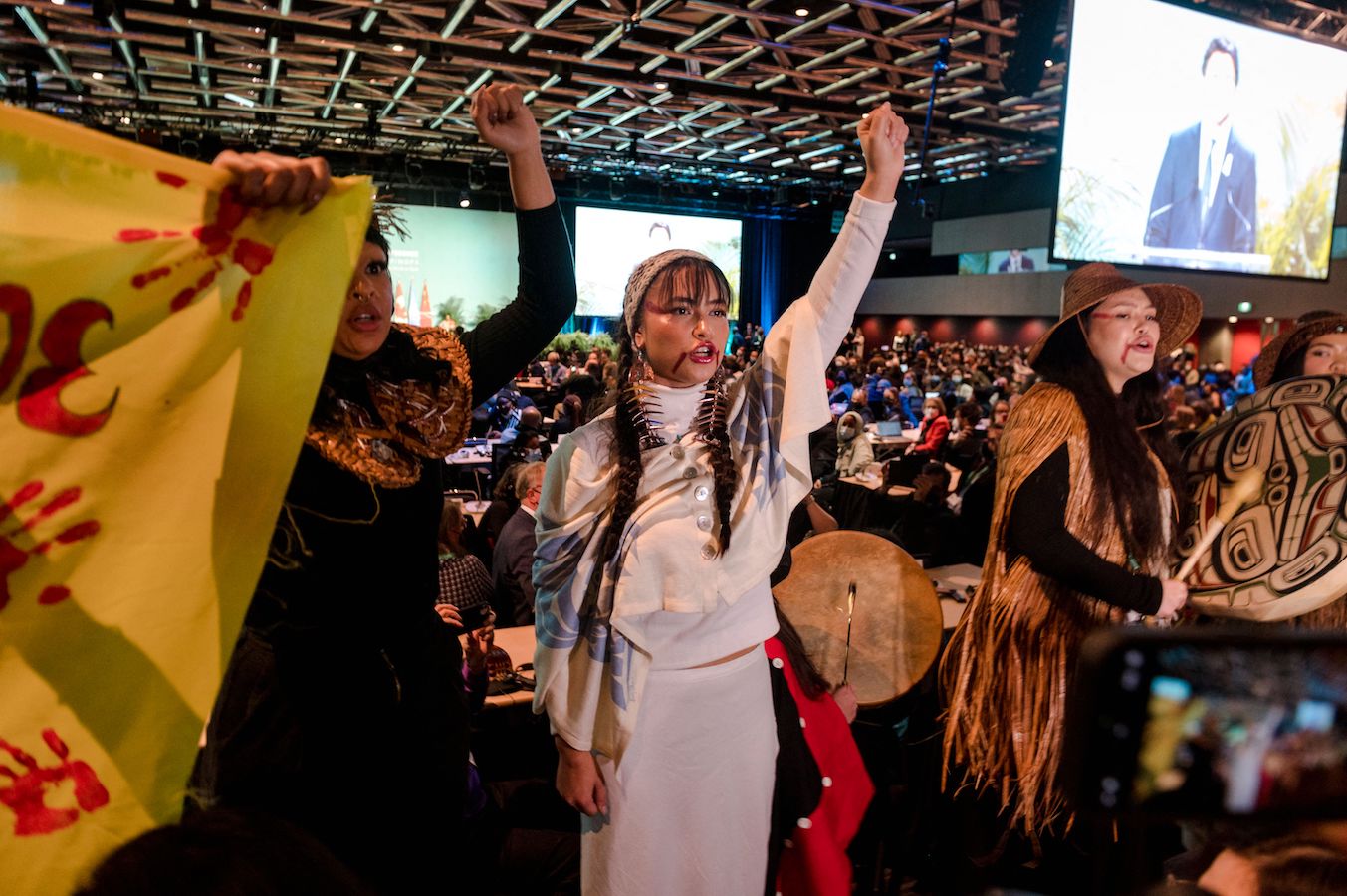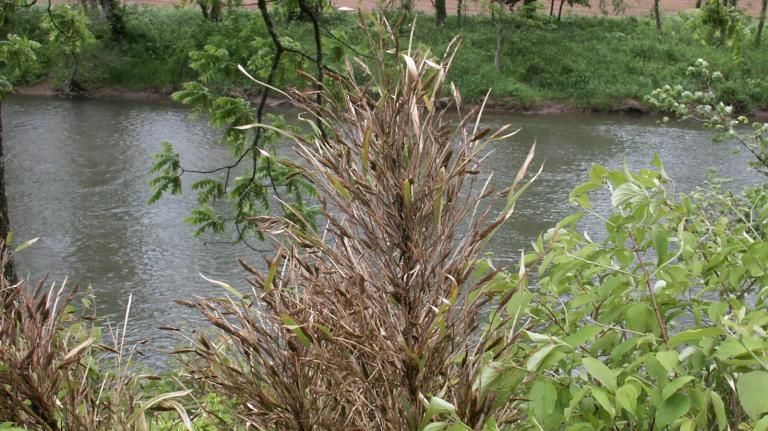Indigenous leaders from around the world are calling for a bigger role in negotiations at the United Nations’ Biodiversity Conference which convenes today in Montreal. Known as COP15, delegates from nearly 200 countries are expected to finalize the Post-2020 Global Biodiversity Framework, a set of international goals and standards for conservation efforts over the next decade.
At the summit, one of the biggest topics of discussion will be the 30X30 protected areas plan, an international plan to conserve 30% of the world’s land and water by 2030. “We are waging war on nature,” U.N. Secretary-General Antonio Guterres said on Tuesday. “This Conference is our chance to stop this orgy of destruction.”
In the run up to COP15, the International Indigenous Forum on Biodiversity (IIFB), a caucus of Indigenous representatives and activists established in 1996 to advocate for Indigenous peoples at international meetings, has been advocating to include language that protects Indigenous rights in the final agreement. “The global biodiversity framework to save nature must respect, promote and support the rights of Indigenous Peoples and Local Communities if it stands any chance of succeeding,” the IIFB said in a statement.
However, amid a push to complete negotiations by deadline, IIFB representatives say they are concerned that their priorities may not be fully heard or included; During COP15, delegates have limited time to negotiate and agree on biodiversity targets and milestones. If an agreement isn’t reached during that time, then final text is moved up a level to a round that may not include Indigenous representatives.
“As the negotiation reaches its conclusion, the space for Indigenous Peoples becomes smaller and smaller,” Jennifer Corpuz, who is Kankanaey Igorot from the Northern Philippines and one of the lead negotiators of the International Indigenous Forum on Biodiversity, said. “If we’re not there, it’s very difficult for us to defend our position.”
Advocates are most concerned with 30X30 and its impacts on Indigenous peoples, rights and lands. In the Democratic Republic of the Congo, Indigenous Batwa were evicted, killed and group raped during a violent eviction campaign from Kahuzi-Biega National Park under the pretense of protecting the UNESCO World Heritage Site from poachers and deforestation. In Tanzania, nearly 150,000 Indigenous Maasai could be evicted from their homes to create game reserves and protected areas. In Nepal, Indigenous Tharu and others were evicted from their lands to create Chitwan National Park and Bardiya National Park, both of which have been supported by international conservation organizations like the World Wildlife Fund.
“If Indigenous Peoples do not maintain or secure ownership of our land nor have equal authority in the decision-making process, the UN’s 30×30 policy may be the biggest land grab in history and further threaten the physical and cultural survival of Indigenous Peoples worldwide,” Indigenous leaders wrote in a letter to Elizabeth Maruma Mrema, Executive Secretary of the UN Convention on Biological Diversity, and other COP15 participants.
The current biodiversity framework text recognizes Indigenous rights, but Corpuz says without Indigenous advocates attached to the draft as it moves through the system, decision makers may make changes that facilitate ongoing violations of Indigenous peoples rights. “Those who are leading the crafting of policy and those who are funding the creation of protected areas, they’re just so stuck in the idea that protected areas are the end all and be all,” Corpuz said. “But that’s not what the science is saying.”
Multiple reports and studies have shown that defending Indigenous rights also protects the environment. Indigenous land contains 80 percent of the world’s remaining biodiversity and the world’s healthiest and most resilient forests are on protected Indigenous territory. “It is undisputed that Indigenous-led conservation solutions have and will continue to deliver better results than approaches that disregard our land and collective rights. Rhetoric is not enough. Conservation must center on and include Indigenous Peoples in order to succeed,” said Amnesty International, Survival International, Minority Rights Group, and Rainforest Foundation UK in a joint statement that calls on states to “urgently reconsider” the 30X30 plan ahead of COP15.
“A human rights-based approach is crucial to a successful Global Biodiversity Framework,” said Lucy Mulenkei, Maasai and co-chair of the International Indigenous Forum on Biodiversity. “Such an approach would mean that biodiversity policies, governance and management do not violate human rights, and those implementing such policies should actively seek ways to support and promote human rights in their design and implementation.”
In Canada, Indigenous Protected and Conservation Areas (IPCAs) offer a successful model of Indigenous-led conservation. First Nations are currently in the process of creating IPCAs that would total nearly 200,000 square miles—larger than the entire state of California. These protected areas help protect Canada’s rich biodiversity as well as Indigenous culture and autonomy. They also provide economic benefits to Indigenous communities, especially through the Guardians program, which trains Indigenous people to manage protected areas.
Valérie Courtois, director of the Indigenous Leadership Initiative and member of the Innu community of Mashteuiatsh, hopes to use COP15 as an opportunity to show that Indigenous peoples can and should lead conservation efforts. “We’re hoping that by showing that it’s possible here in Canada, that it may be possible in other parts of the world to do that as well,” she said.
In 2010, at COP10 in Nagoya, Japan, governments agreed on a set of biodiversity targets, including plans for sustainable consumption and reducing natural habitat loss. According to the Convention on Biological Diversity, none of those targets have been fully met. However, the world is nearly halfway to the goal of 30 percent conservation.
“Only by recognizing the rights, knowledge, innovations, and values of Indigenous Peoples and Local Communities will we be able to push forward the global agenda to sustainably use and conserve biodiversity,” said Lakpa Nuri Sherpa, one of the Co-Chairs of the International Indigenous Forum on Biodiversity.




